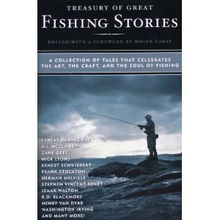Introduction:
Fishing, an ancient pastime that has stood the test of time, requires not only patience but also a set of refined skills. One such skill is the art of baiting, or "baitsing" in Chinese, which involves strategically placing baits in a fishing spot to attract fish. This article delves into the essential techniques for successful baiting, ensuring that your fishing endeavors yield fruitful results.
Understanding the Basics of Baiting:
Before we delve into the specifics, it's crucial to understand the purpose of baiting. Baiting is the process of introducing food into a fishing area to attract fish. The right bait can make the difference between a successful day on the water and a fruitless endeavor. Here's how to master the art of baiting:

Choose the Right Bait:
The first step in successful baiting is selecting the right bait. This depends on the type of fish you're targeting and the environment you're fishing in. Here are some common types of baits:
- Natural Baits: These include live bait like worms, minnows, or crickets, as well as dead bait like fish or shrimp. Natural baits are often preferred by fish because they resemble their natural food sources.
- Artificial Baits: These include lures, jigs, and spinners. Artificial baits can be more effective in certain conditions, such as when fish are particularly fussy or when using techniques like fly fishing.
- Commercial Baits: These are pre-mixed baits available in stores, such as corn, bread, or artificial scents. They are convenient but may not be as effective as natural or artificial baits.
Understand the Behavior of Your Target Fish:
Different fish species have different feeding habits and preferences. To be successful, you need to understand the behavior of the fish you're targeting. For example:
- Largemouth Bass: Bass are known for their aggressive nature and are often attracted to moving baits. Live bait like worms or minnows can be effective.
- Catfish: Catfish are bottom feeders and are attracted to stink baits like chicken liver or cut bait like shad or mullet.
- Trout: Trout are more selective feeders and are often attracted to smaller, natural-looking baits like nymphs or tiny jigs.
Learn How to Place Your Bait:
Once you've chosen the right bait, the next step is to learn how to place it effectively. Here are some common baiting techniques:
- Drop Shot Baiting: This involves dropping your bait to the bottom and then slowly reeling it back up. It's effective for fish that feed on the bottom, like catfish.
- Carolina Rig Baiting: This technique involves placing your bait on the bottom with a weight and a leader. It's great for fish that feed near the bottom but also want to feel the weight of the bait.
- Fishing from a Boat: If you're fishing from a boat, you can use a variety of techniques, including casting, casting from the side, or drifting. The key is to understand the currents and wind conditions to place your bait effectively.
The Importance of Timing:
Timing is everything in fishing. Fish are more active during certain times of the day, such as early morning or evening. Additionally, the time of year can affect fish behavior. For instance, fish may be more active during spawning season or when water temperatures are optimal.
Experiment and Adapt:
Fishing is an ever-evolving process. You may need to experiment with different baits, techniques, and times of day to find what works best for your specific fishing environment. Keep a journal of your experiences and adapt your approach accordingly.
Conclusion:
Baiting is a fundamental skill in fishing that can significantly impact your success on the water. By understanding the basics of baiting, choosing the right bait, understanding the behavior of your target fish, learning how to place your bait effectively, and adapting to different conditions, you'll be well on your way to becoming a master angler. So, grab your rod, select your bait, and get ready to cast your line into the water. Happy fishing!












